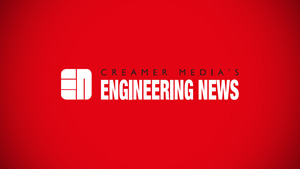Fuel cell thrust continuing – Anglo American Platinum

Anglo American Platinum CEO Chris Griffith talks to Mining Weekly Online’s Martin Creamer. Photographs: Duane Daws. Video and Video Editing: Nicholas Boyd.
The momentum around fuel cell vehicles as one of the zero-emission technologies of the future is continuing to build, as shown by launches and proposed launches of commercially available fuel cell electric vehicles by major car manufacturers.
Pictures of fuel cell electric vehicles bearing Hyundai, Toyota, Honda and Mercedes-Benz branding were last week flashed onto the screen at Anglo American Platinum’s presentation of cash-generating and debt-reducing interim results, which drew analysts’ applause.
Outlining the automotive market as a driver of demand for platinum-group metals (PGMs), Anglo American Platinum CEO Chris Griffith said PGM demand was forecast to be robust for diesel, petrol, electric and hybrid vehicles up to 2025.
He said that the automotive market was expected to grow from 90-million vehicles this year to 120-million vehicles in 2025.
Anglo American Platinum executive marketing head Andrew Hinkly said in response to analysts’ questions that fuel cell electric bus company Ballard had secured a large order for fuel cell buses from a province in China.
There had also been continued progress in the provision of refuelling stations, notably in California and the rest of the eastern seaboard in the US.
“[There are] good early signs of continued market penetration and demand for fuel cells in the transport sector, which is clearly the most important sector for us,” Hinkly added.
There were now close to a 140 hydrogen refuelling stations around the world, with another 40 in development and 2 000 planned over the next ten years.
Mostly misunderstood, said Griffith, was that the electric vehicle category included hybrid electric vehicles and that this category of vehicle was poised to increase from 3-million vehicles a year to 11-million vehicles a year.
It was clear the PGM-containing hybrid vehicles were expected to account for most electric vehicles.
In the electric segment, fuel cell electric vehicles – which use PGMs – and battery electric vehicles – which do not – are expected to coexist with one another, much as petrol and diesel vehicles coexist today.
“The electrification of the drivetrain will continue, constituting about 10% of market share in ten years,” he said, adding that, as the majority of the electric vehicles would be PGM-containing hybrids, the trend was “unlikely to be disruptive to our industry”.
Asked by Mining Weekly to elaborate on the assertion that hybrid electric vehicles contain similar amounts of PGMs to those in conventional vehicles, Griffith disclosed that the slide was screened in response to a “huge” number of questions on electric vehicles, including whether every vehicle driven in ten years’ time would be a battery electric vehicle.
The questions were remarkable in their diversity, but also in their lack of understanding of progress made in terms of the electrification of the drivetrain.
He wanted to emphasise firstly that the entire automotive market, in terms of absolute numbers of vehicles, was poised to grow, which was important even for platinum-using diesel vehicles.
While diesel’s market share would decline, the overall number of diesel vehicles would be higher in absolute numbers.
To avoid the misconception that an electric vehicle meant a battery electric vehicle and not a fuel cell electric vehicle, the company pointed out that most of today’s electric vehicles were hybrid vehicles.
Because hybrids also had combustion engines, they required PGM-containing catalysts and, because they ran at lower temperatures, the combustion was more incomplete and thus required a higher PGM loading than that required for a conventional vehicle.
“With the conformity factors happening in the future, you’re likely to see about the same loading on the autocatalyst for a hybrid vehicle as for a conventional vehicle. Because most of the vehicles will be petrol vehicles, they’ll be pretty much the same loadings as what you’ve got on a palladium catalyst,” Griffith added.
Comments
Press Office
Announcements
What's On
Subscribe to improve your user experience...
Option 1 (equivalent of R125 a month):
Receive a weekly copy of Creamer Media's Engineering News & Mining Weekly magazine
(print copy for those in South Africa and e-magazine for those outside of South Africa)
Receive daily email newsletters
Access to full search results
Access archive of magazine back copies
Access to Projects in Progress
Access to ONE Research Report of your choice in PDF format
Option 2 (equivalent of R375 a month):
All benefits from Option 1
PLUS
Access to Creamer Media's Research Channel Africa for ALL Research Reports, in PDF format, on various industrial and mining sectors
including Electricity; Water; Energy Transition; Hydrogen; Roads, Rail and Ports; Coal; Gold; Platinum; Battery Metals; etc.
Already a subscriber?
Forgotten your password?
Receive weekly copy of Creamer Media's Engineering News & Mining Weekly magazine (print copy for those in South Africa and e-magazine for those outside of South Africa)
➕
Recieve daily email newsletters
➕
Access to full search results
➕
Access archive of magazine back copies
➕
Access to Projects in Progress
➕
Access to ONE Research Report of your choice in PDF format
RESEARCH CHANNEL AFRICA
R4500 (equivalent of R375 a month)
SUBSCRIBEAll benefits from Option 1
➕
Access to Creamer Media's Research Channel Africa for ALL Research Reports on various industrial and mining sectors, in PDF format, including on:
Electricity
➕
Water
➕
Energy Transition
➕
Hydrogen
➕
Roads, Rail and Ports
➕
Coal
➕
Gold
➕
Platinum
➕
Battery Metals
➕
etc.
Receive all benefits from Option 1 or Option 2 delivered to numerous people at your company
➕
Multiple User names and Passwords for simultaneous log-ins
➕
Intranet integration access to all in your organisation



















